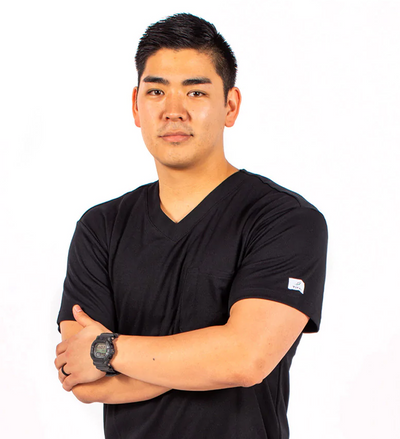When it comes to proper hygiene and safety in the medical field, wearing surgical caps and masks is essential. These two pieces of headwear, complementing the high-quality scrubs offered by Titan Scrubs, not only protect healthcare professionals but also play a crucial role in patient perception. This article will discuss the various aspects of surgical caps and masks, including their benefits, hygiene protocols, and how they integrate with Titan Scrubs' offerings to complete a medical professional's wardrobe.
- The Benefits of Wearing a Surgical Cap and Mask
- Essential Protocol for Hygiene and Safety
- How to Properly Clean and Maintain Your Surgical Caps and Masks
- How to Choose the Right Size for Your Head
- Tips for Extending the Life of Your Surgical Caps and Masks
- Finding the Perfect Color for Your Medical Wardrobe
- How the Right Choice of Headwear and Masks Affects Patient Perception
- Innovations in Surgical Headwear and Face Masks
- Fit and Function: Ensuring Your Cap and Mask Stay Secure
The Benefits of Wearing a Surgical Cap and Mask
Surgical caps and masks, like the durable and comfortable selections from Titan Scrubs, offer numerous benefits. They act as protective barriers against pathogens and contaminants, essential for the safety of both healthcare professionals and patients. Wearing these items, alongside Titan Scrubs’ medical apparel, enhances the overall professionalism and cleanliness of healthcare settings.
When healthcare professionals don surgical caps and masks, they not only protect themselves but also prioritize the safety of their patients. These essential items create a physical barrier, preventing any potential transmission of harmful bacteria or viruses from healthcare workers to vulnerable individuals. By wearing these protective gears, healthcare professionals demonstrate their dedication to providing a safe and sterile environment for patients.
Moreover, surgical caps and masks contribute to the overall cleanliness and professionalism of healthcare facilities. The sight of medical staff donning these items creates a sense of assurance and trust among patients and their families. It showcases the commitment of healthcare professionals to maintaining a high standard of hygiene and infection control.
When healthcare professionals wear surgical caps and masks, they not only protect themselves and their patients, but they also contribute to the overall aesthetics of the healthcare setting. The uniform appearance created by these items adds a touch of professionalism and unity among the medical staff. Patients and their families can easily identify healthcare professionals in a crowded environment, which enhances communication and fosters a sense of security.
Furthermore, the use of surgical caps and masks is not limited to infection prevention. These items also play a crucial role in reducing the risk of contamination during surgical procedures. By covering the hair and mouth, surgical caps and masks prevent the shedding of hair, skin cells, and respiratory droplets that could potentially contaminate the sterile field. This added layer of protection ensures the integrity of the surgical site, minimizing the chances of post-operative infections.
It is worth mentioning that the benefits of wearing surgical caps and masks extend beyond the healthcare setting. In public spaces, such as airports or crowded areas, healthcare professionals wearing these items serve as role models for good hygiene practices. They set an example for others to follow, emphasizing the importance of infection prevention and the role of personal protective equipment in safeguarding public health.
In conclusion, wearing surgical caps and masks offers a multitude of benefits to healthcare professionals, patients, and the overall healthcare environment. These essential items act as a protective barrier against pathogens, contribute to the cleanliness and professionalism of healthcare facilities, and reduce the risk of contamination during surgical procedures. By donning surgical caps and masks, healthcare professionals demonstrate their commitment to safety, high-quality care, and infection prevention.
Essential Protocol for Hygiene and Safety
Adhering to proper hygiene and safety protocols is crucial when wearing surgical caps and masks. Before putting them on, it is essential to thoroughly wash your hands with soap and water or use an alcohol-based hand sanitizer. This step is vital because it helps remove any dirt, bacteria, or viruses that may be present on your hands, reducing the risk of contamination.
Once your hands are clean, it is time to put on the surgical cap. Ensure that your hair is completely covered by the cap, leaving no strands exposed. This is important because it helps prevent any loose hair from falling onto the sterile field, reducing the risk of contamination during surgical procedures.
After securing the cap, it is time to put on the mask. Hold the mask by the ear loops and place it over your nose and mouth. Make sure the mask fits snugly, with no gaps between the mask and your face. This proper fit is crucial because it helps prevent any droplets or particles from entering or escaping through the sides of the mask.
Throughout your shift, it is important to avoid touching or adjusting the mask unnecessarily. Touching the mask with contaminated hands can introduce pathogens onto the mask's surface, increasing the risk of infection. If you need to adjust the mask due to discomfort or poor fit, make sure to wash your hands or use hand sanitizer before and after making any adjustments.
In case of any contamination or damage to the mask, it is crucial to replace it immediately. A damaged or contaminated mask can compromise its effectiveness in filtering out airborne particles, putting both the wearer and others at risk. Therefore, it is important to have a sufficient supply of masks readily available to ensure prompt replacement when needed.
Finally, always remove and discard used masks and caps properly, following the facility's guidelines for biohazard waste disposal. This step is essential to prevent the spread of any potential pathogens that may have accumulated on the mask or cap during use. Proper disposal helps maintain a clean and safe environment for healthcare professionals and patients alike.
How to Properly Clean and Maintain Your Surgical Caps and Masks
Cleaning and maintaining surgical caps and masks are essential for their longevity and effectiveness. Start by following the manufacturer's instructions for cleaning, as different materials may require specific care. Generally, it is recommended to wash caps and masks with warm water and gentle detergent. Make sure to rinse them thoroughly and air dry them completely before reuse.
Regular inspection is also crucial. Before wearing them, check for any signs of wear and tear, such as holes or frayed edges. Replace any damaged items promptly to ensure maximum protection and hygiene.
How to Choose the Right Size for Your Head
Choosing the right size is crucial for optimal comfort and performance. Surgical caps and masks are available in a range of sizes to accommodate various head shapes and sizes. To determine the correct size, measure the circumference of your head just above the ears and refer to the size chart provided by the manufacturer.
It's important not to wear caps or masks that are too tight as they may cause discomfort or restrict blood flow. On the other hand, loose-fitting headwear can compromise their effectiveness. Selecting the correct size ensures a secure and comfortable fit throughout your workday.
Tips for Extending the Life of Your Surgical Caps and Masks
To maximize the lifespan of your surgical caps and masks, here are some helpful tips:
- Avoid excessive stretching or pulling when putting them on or taking them off.
- Avoid direct contact with harsh chemicals or solvents.
- Store them in a clean and dry environment when not in use.
- Replace them as soon as signs of wear and tear appear.
- Consider having multiple sets of caps and masks to rotate throughout the week.
Finding the Perfect Color for Your Medical Wardrobe
While functionality and hygiene are paramount when choosing surgical caps and masks, adding a touch of personalization can also be beneficial. Many healthcare facilities offer a variety of colors and patterns to suit individual preferences. Whether you prefer vibrant colors or subtle tones, finding the perfect color can help create a positive and inviting environment for patients and healthcare professionals alike.
It is important to consult with your employer or follow the guidelines specified by regulatory authorities to ensure you are using the appropriate type of mask for your specific role and responsibilities.
How the Right Choice of Headwear and Masks Affects Patient Perception
The choice of surgical caps and masks can significantly impact patient perception. When patients see healthcare professionals wearing these items, it creates a sense of cleanliness, professionalism, and expertise. The unified appearance provided by caps and masks fosters trust and reassurance, making patients feel more at ease during their medical journey.
Innovations in Surgical Headwear and Face Masks
The healthcare industry continually strives to innovate and improve personal protective equipment, including surgical headwear and face masks. Recent advancements in technology and materials have led to the development of more comfortable, breathable, and efficient designs. Some innovations include:
- Antimicrobial fabrics that help reduce the growth of bacteria and microbes.
- Ergonomic designs that ensure a better fit and minimize discomfort during extended use.
- Improved filtration systems that offer enhanced protection against airborne particles.
These innovations not only enhance healthcare professionals' experience but also contribute to improving patient outcomes and overall safety within healthcare facilities.
Fit and Function: Ensuring Your Cap and Mask Stay Secure
Securing your surgical cap and mask is essential for comfort and efficacy. To achieve a secure fit, follow these recommendations:
- Adjust the cap to cover all hair completely, securing it at the back to prevent slipping.
- Ensure the mask covers your nose and mouth without any gaps, and the elastic straps fit snugly behind your ears.
- Avoid touching or adjusting the cap or mask unnecessarily throughout your shift to minimize the risk of contamination.
Securing a comfortable and effective fit for caps and masks is as important as the proper fitting of Titan Scrubs. A well-fitted ensemble of scrubs, caps, and masks ensures optimal performance and comfort throughout a healthcare professional's shift.
In conclusion, surgical caps and masks are integral parts of a medical professional's wardrobe, much like the essential role played by Titan Scrubs' apparel. Together, they form a complete, functional, and professional attire, crucial for maintaining hygiene, safety, and a positive patient perception in the healthcare environment.








